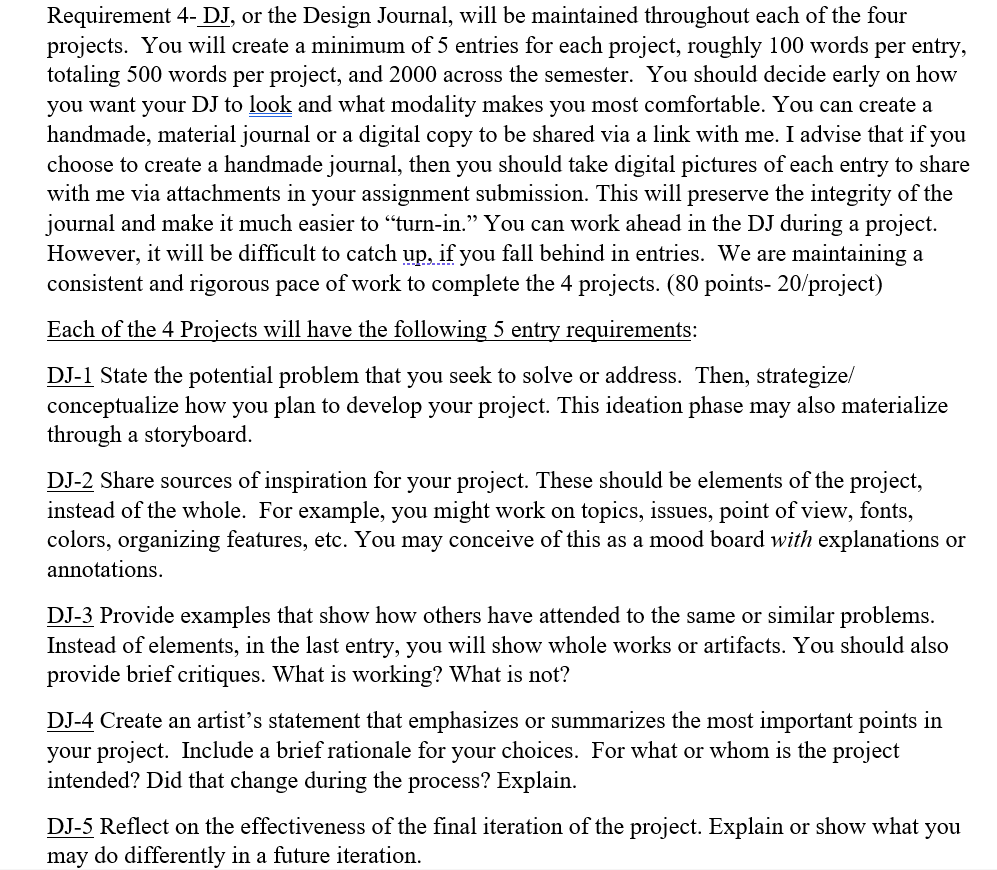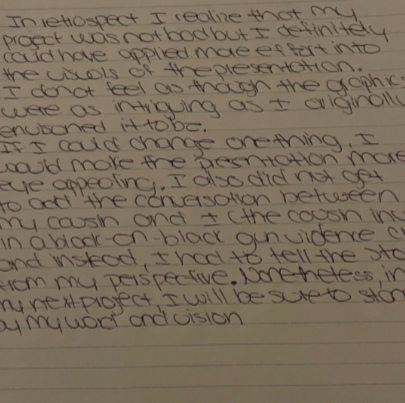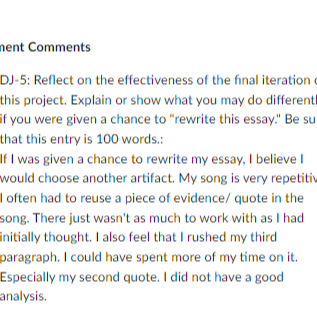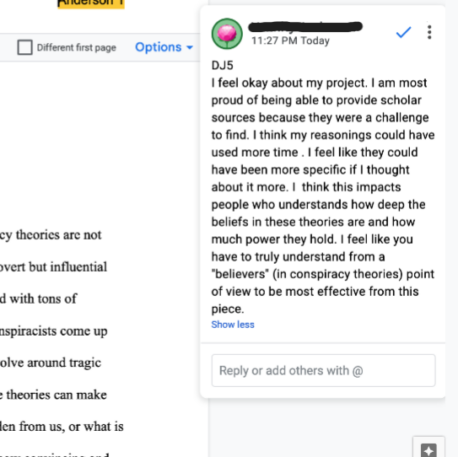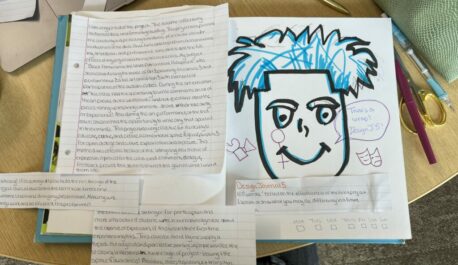
design journal 5 (dj-5)
improve
Project 1– “Making a Thing” asked students to identify a problem or issue of their choosing, not assigned by the instructor. Then, they were to develop an original artifact that attended to the problem or issue address fellow peers in our classroom.
In the final Design Journal for Project 1, students had a chance to reflect on their work as a whole. The image below shows the prompt that students were given to help capture their immediate response to looking back through their project. The journal entry asked that students qualify their overall success in meeting the assignment objective. How well were they able to design a purposeful artifact for their peers?
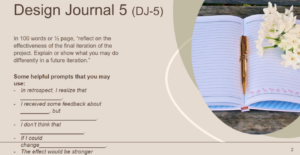
Project 2– “Pulling a Thing Apart” asked students to break an existing artifact down to a set of features or components for rhetorical analysis. The subject matter could depart from the content of Project 1.
As this was the most conventional writing project in the course’s assignment sequence, Design Journal 5 helped to capture the student’s thoughts about the effectiveness of their final iteration of the essay. Students were expected to explain what they would do differently if they were given a chance to “rewrite their essay.” Did it meet the expectations of the audience based on the rhetorical situation? Why or why not?
Project 3– “Discussing Things” asked students to resituate the kind of work they had done previously in Projects 1 and 2 by creating a new artifact that performed an argumentative function in a public space. Students were expected to employ some of the rhetorical strategies analyzed in Project 2 by other producers.
Students were asked to write a reflection that illustrated how they felt about their project and if their argument made an impact on their audience. They had shared their argumentative project with peers during the test step and received feedback about the strength of the suitability and logic of the evidence included. As they were on the third of four major projects, students had experienced growth in various aspects of their writing. So, in the 5th Design Journal, they were encouraged to compare things they did well to those that could still use improvement.
Project 4– “Putting a Thing Back Together, Better” asked students to return to their work in Project 1 equipped with a fresh set of knowledge, tools, and inspiration. They had to redesign their Project 1 by choosing a new modality and new target audience for the redesigned artifact.
Design Journal 5 intended for students to write a final reflection on their overall success engaging a public audience with their artifact. Students were asked to reflect on how well the newly chosen modality (redesign from P1 to P4) achieved its purpose.
